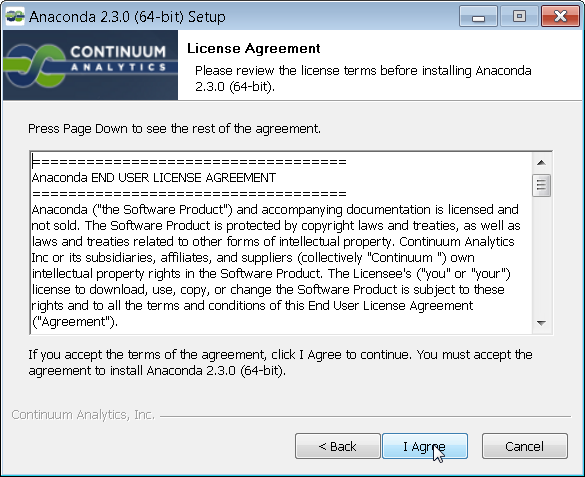
- Install pyqt5 with anaconda for free#
- Install pyqt5 with anaconda install#
- Install pyqt5 with anaconda code#
- Install pyqt5 with anaconda mac#
You’ll notice that this method is wrapped in an fbs decorator. Return MainWindow(self) # Pass context to the window. Python from fbs_runtime.application_context.PyQt5 import ApplicationContext, \

The project follows the same basic structure as for the stub application we created above. The custom application icons were created using icon art by Freepik. If you want to see how_ Moonsweeper_ itself works, see the original App article. Only the changes required to convert Moonsweeper over to fbs are covered here.
Install pyqt5 with anaconda code#
The updated source code is available to download below. The bare-bones application doesn’t do very much, so below we’ll look at something more complete - the Moonsweeper application from my 15 minute apps. Execution continues in this event loop until the application is exited, at which point your `.run()` method will return (with the appropriate exit code). On execution the `.run()` method will be called and your event loop started. Python class AppContext(ApplicationContext): Without fbs this would look something like this. Without fbs you would usually define this at the base of your script, and call. Every Qt application must have one (and only one) QApplication to hold the event loop and core settings. The ApplicationContext object also creates and holds a reference to a global QApplication object - available under ApplicationContext.app. The ApplicationContext provides a central location for initialising and storing these components, as well as providing access to some core fbs features. These are commonly stored in the QMainWindow or as global vars which can get a bit messy as your application grows. When building PyQt5 applications there are typically a number of components or resources that are used throughout your app. If you’ve built PyQt5 applications before you’ll notice that building an application with fbs introduces a new concept - the ApplicationContext. Instantiate the subclassĮxit_code = n() # 5. End run() with this lineĪppctxt = AppContext() # 4. Python from fbs_runtime.application_context.PyQt5 import ApplicationContextĬlass AppContext(ApplicationContext): # 1. This has the benefit of allowing you to test (and continue to test) the packageability of your application as you develop it, rather than leaving it to the end. If you’re starting a PyQt5 application from scratch, you can use the fbs startproject management command to create a complete, working and packageable application stub in the current folder. Now you're ready to start packaging applications with fbs. h, -help show this help message and exit Init_licensing Generate public/private keys for licensing Login Save your account details to secret.json Register Create an account for uploading your files Gengpgkey Generate a GPG key for Linux code signing Release Bump version and run clean,freeze.,uploadīuildvm Build a Linux VM. Upload Upload installer and repository to fbs.sh Repo Generate files for automatic updates Sign_installer Sign installer, so the user's OS trusts it Installer Create an installer for your app

Startproject Start a new project in the current directoryįreeze Compile your code to a standalone executable
Install pyqt5 with anaconda install#
You can install these in a virtual environment (or your applications virtual environment) to keep your environment clean.įbs only supports Python versions 3.5 and 3.6 The only other requirement is PyInstaller which handles the packaging itself. Install requirementsįbs works out of the box with both PyQt PyQt5 and Qt for Python PySide2. You can also use PyInstaller directly to package applications, see our Packaging PyQt5 & PySide2 applications for Windows, with PyInstaller tutorial.

See the fbs licensing page for up-to-date information.įbs is built on top of PyInstaller. For commercial (or other non-GPL) packages you must buy a commercial license.
Install pyqt5 with anaconda for free#
This means you can use the fbs system for free in packages distributed with the GPL. If you're impatient, you can grab the Moonsweeper installers directly for Windows, MacOS or Linux (Ubuntu).įbs is licensed under the GPL. If you’re targeting multiple platforms with your app, it's definitely worth a look. This tutorial will take you through the steps of creating PyQt5 applications using fbs from scratch, and for converting existing projects over to the system. The included resource API is particularly useful, simplifying the handling of external data files, images or third-party libraries - a common pain point when bundling apps. Built on top of PyInstaller it wraps some of the rough edges and defines a standard project structure which allows the build process to be entirely automated.
Install pyqt5 with anaconda mac#
Fbs is a cross-platform PyQt5 packaging system which supports building desktop applications for Windows, Mac and Linux (Ubuntu, Fedora and Arch).


 0 kommentar(er)
0 kommentar(er)
